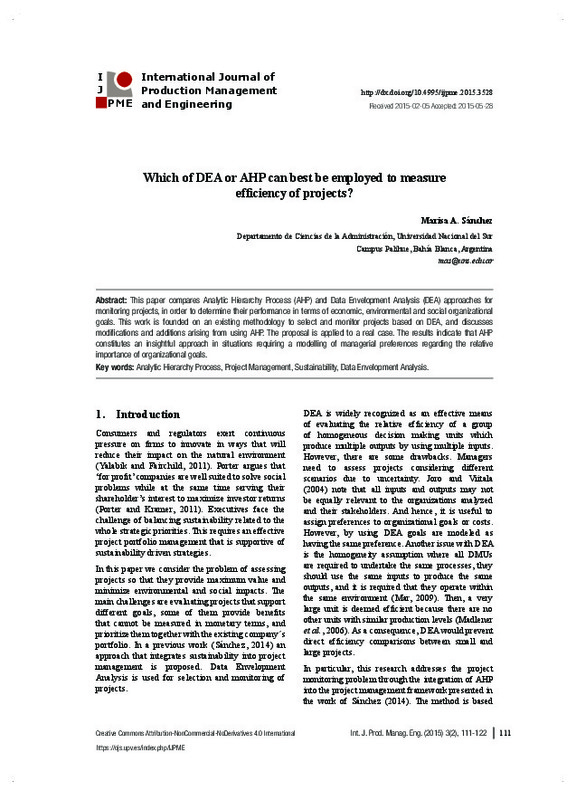JavaScript is disabled for your browser. Some features of this site may not work without it.
Buscar en RiuNet
Listar
Mi cuenta
Estadísticas
Ayuda RiuNet
Admin. UPV
Desde el lunes 3 y hasta el jueves 20 de marzo, RiuNet funcionará en modo de solo lectura a causa de su actualización a una nueva versión.
Which of DEA or AHP can best be employed to measure efficiency of projects?
Mostrar el registro completo del ítem
Sánchez, MA. (2015). Which of DEA or AHP can best be employed to measure efficiency of projects?. International Journal of Production Management and Engineering. 3(2):111-122. https://doi.org/10.4995/ijpme.2015.3528
Por favor, use este identificador para citar o enlazar este ítem: http://hdl.handle.net/10251/74346
Ficheros en el ítem
Metadatos del ítem
| Título: | Which of DEA or AHP can best be employed to measure efficiency of projects? | |
| Autor: | Sánchez, Marisa Analia | |
| Fecha difusión: |
|
|
| Resumen: |
[EN] This paper compares Analytic Hierarchy Process (AHP) and Data Envelopment Analysis (DEA) approaches for monitoring projects, in order to determine their performance in terms of economic, environmental and social ...[+]
|
|
| Palabras clave: |
|
|
| Derechos de uso: | Reconocimiento - No comercial - Sin obra derivada (by-nc-nd) | |
| Fuente: |
|
|
| DOI: |
|
|
| Editorial: |
|
|
| Versión del editor: | https://doi.org/10.4995/ijpme.2015.3528 | |
| Tipo: |
|








